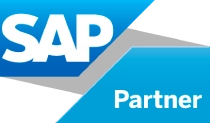Product engineering plays a pivotal role in today’s technology-driven landscape, serving as the backbone of innovation and development across various industries. This multifaceted discipline encompasses the entire process of designing, developing, and testing products, ensuring they meet both functional and user requirements. By transforming abstract ideas into tangible solutions, product engineering aligns with business objectives and market needs, facilitating a seamless transition from concept to market readiness.
The Importance of Product Engineering
The significance of product engineering lies in its ability to bridge the gap between conceptualization and practical application. It employs a combination of engineering principles, design thinking, and project management to create products that are not only innovative but also reliable, scalable, and user-centric. This approach is crucial in a rapidly evolving market, where businesses must adapt to changing consumer demands while maintaining a competitive edge.
The product engineering services market is experiencing remarkable growth, projected to expand from USD 1,276.26 billion in 2024 to USD 2,642.90 billion by 2032. This surge reflects the increasing demand for integrated engineering solutions that can respond to the diverse needs of various sectors. As product engineering intersects with multiple fields—such as software, mechanical, and electrical engineering—it fosters collaboration among different disciplines, reinforcing its status as a cornerstone of modern product development.
Defining Product Engineering
In essence, product engineering involves a comprehensive approach to managing the lifecycle of products, particularly in software development. This includes every phase from initial ideation and design through development, testing, deployment, and ongoing maintenance. Unlike traditional engineering disciplines that may focus solely on physical products, software product engineering requires an in-depth understanding of digital environments, coding frameworks, and user interface design principles.
The primary objective is to deliver software solutions that are efficient, adaptable, and capable of integrating seamlessly with existing systems while providing an exceptional user experience. Over time, the methodologies surrounding product engineering have evolved significantly. The shift from linear processes to more iterative frameworks like Agile and DevOps has transformed how software products are developed.
The Evolution of Product Engineering Methodologies
Historically, software development followed a linear waterfall model where distinct phases had minimal overlap. This often led to extended development times and limited flexibility in adapting to market changes. However, the advent of Agile methodologies has revolutionized this landscape by promoting continuous development through short cycles known as sprints. This allows teams to gather feedback rapidly and respond effectively to user needs.
DevOps further enhances this process by integrating development and operations teams, ensuring faster and more reliable software releases. The incorporation of modern technologies such as cloud computing and automation tools has also played a significant role in streamlining product engineering processes.
The Product Engineering Process
The product lifecycle in engineering outlines several key stages that a product undergoes from inception to end-of-life:
- Idea and Concept Development: This initial phase involves extensive market research to identify unmet needs within specific industries or customer bases. Techniques such as brainstorming sessions and SWOT analysis help teams refine ideas based on real-world data.
- Design and Prototyping: After establishing a solid concept, the next step is creating wireframes and mockups that define the software’s architecture and user experience. Prototyping allows stakeholders to visualize the product early on, facilitating feedback before full-scale development begins.
- Development and Testing: During this phase, the actual coding occurs according to design specifications. Agile methodologies support this process through iterative cycles while various testing methods ensure quality assurance.
- Deployment and Maintenance: Once developed, the software is released to users through appropriate channels. Following deployment, ongoing maintenance is crucial for collecting user feedback and implementing updates or bug fixes.
Roles and Responsibilities of a Product Engineer
A product engineer plays a critical role throughout the product lifecycle by ensuring alignment with business goals and user needs. Their core responsibilities include:
- Technical Management: Overseeing technical aspects such as software architecture decisions ensures scalability and efficiency while addressing bottlenecks in development processes.
- Overseeing Development: Monitoring each phase of development guarantees adherence to technical requirements while managing risks associated with timelines.
- Collaboration: Facilitating communication among various departments—such as marketing and design—ensures that all stakeholders are aligned with project objectives.
Challenges Faced by Product Engineers
Product engineers encounter several challenges that can impact their effectiveness:
- Budget Constraints: Balancing innovation with financial limitations requires strategic planning to identify cost-effective solutions without compromising quality.
- Meeting Deadlines: Coordinating multiple stakeholders can complicate timelines; thus engineers must adeptly manage resources to mitigate delays.
- Balancing Innovation with Practicality: While striving for cutting-edge solutions is important, engineers must ensure that innovations remain feasible within budgetary constraints while meeting user expectations.
Techniques and Tools for Effective Product Engineering
To enhance efficiency in product engineering processes, various techniques and tools are employed:
- Agile and Lean Methodologies: These approaches emphasize flexibility and continuous improvement. Agile breaks down projects into manageable increments for rapid delivery while Lean focuses on maximizing value by minimizing waste.
- Rapid Prototyping: This technique allows teams to create simplified models early in the process for stakeholder feedback before committing extensive resources.
- Software Automation Tools: Integrated Development Environments (IDEs) like Visual Studio Code aid coding efforts while project management tools such as Jira streamline task tracking across teams.
By leveraging these methodologies and tools effectively, organizations can enhance their product engineering efforts—delivering high-quality solutions that meet evolving market demands efficiently.
Conclusion
In conclusion, product engineering is an essential discipline that drives innovation across various sectors by transforming ideas into practical solutions. Its comprehensive approach encompasses every stage of the product lifecycle—from ideation through deployment—ensuring alignment with business objectives while addressing user needs effectively. As technologies evolve and markets change rapidly, mastering modern methodologies like Agile and leveraging advanced tools will be crucial for organizations aiming to maintain a competitive edge in today’s dynamic landscape.

